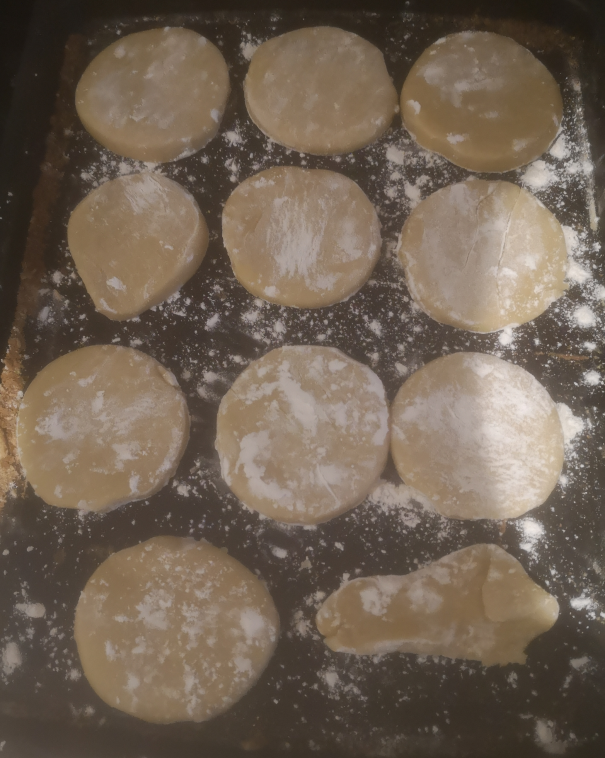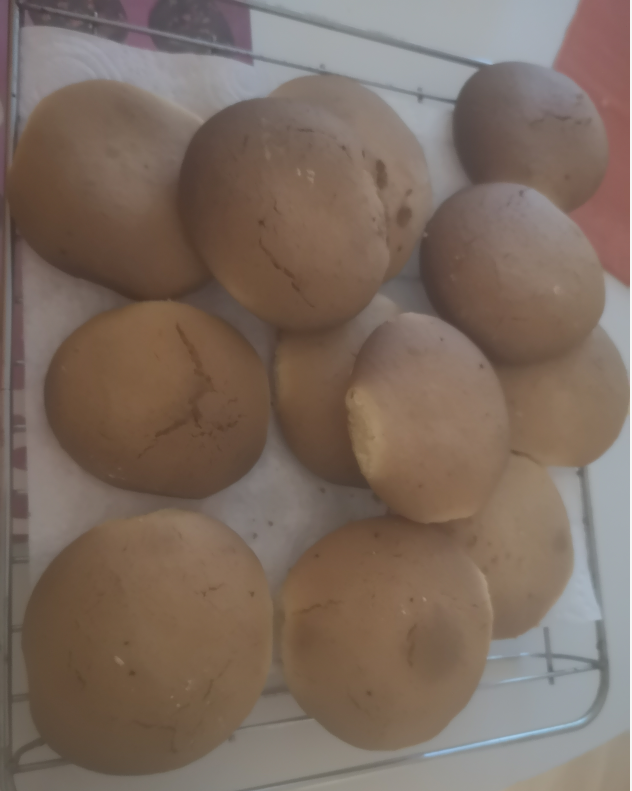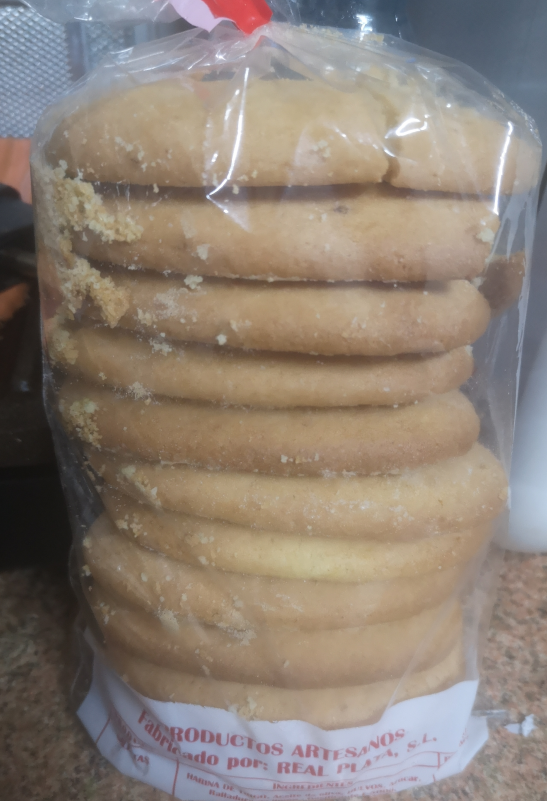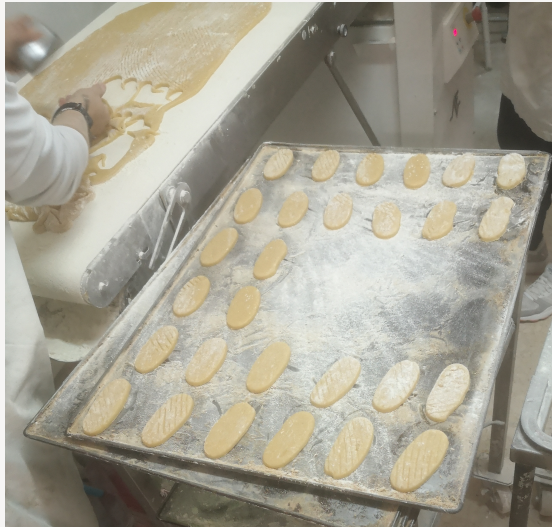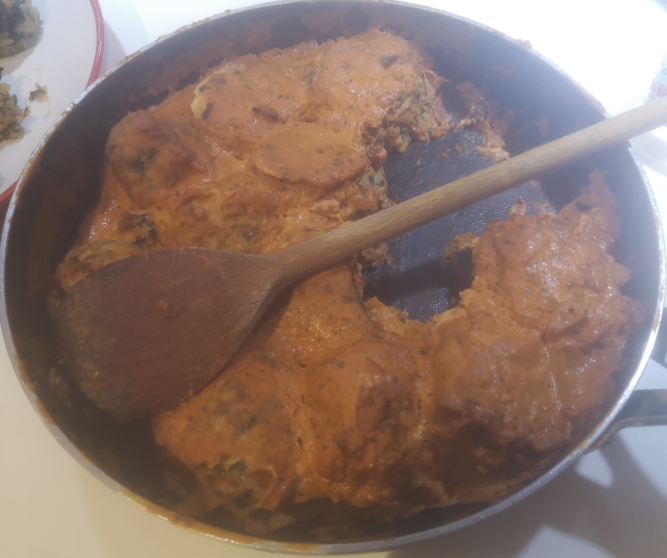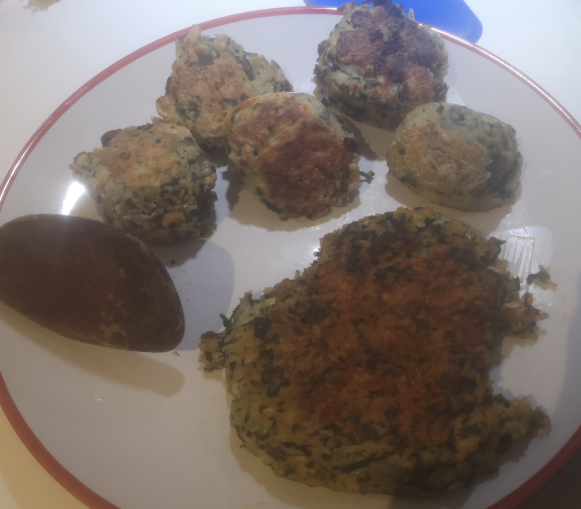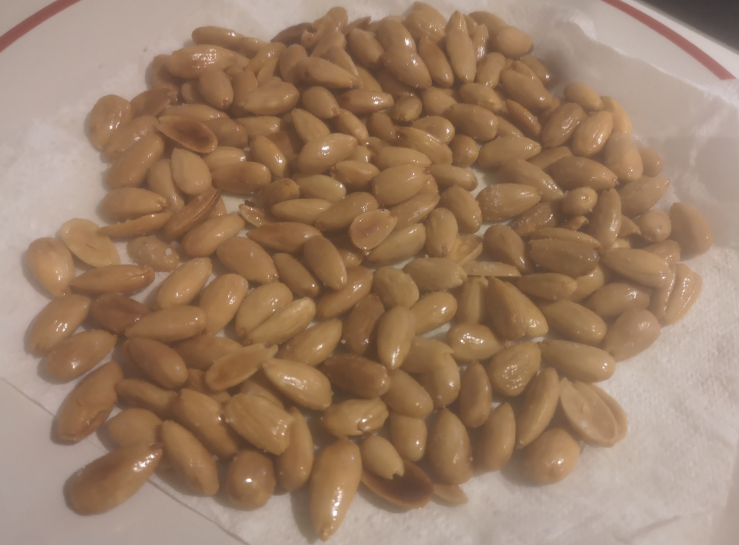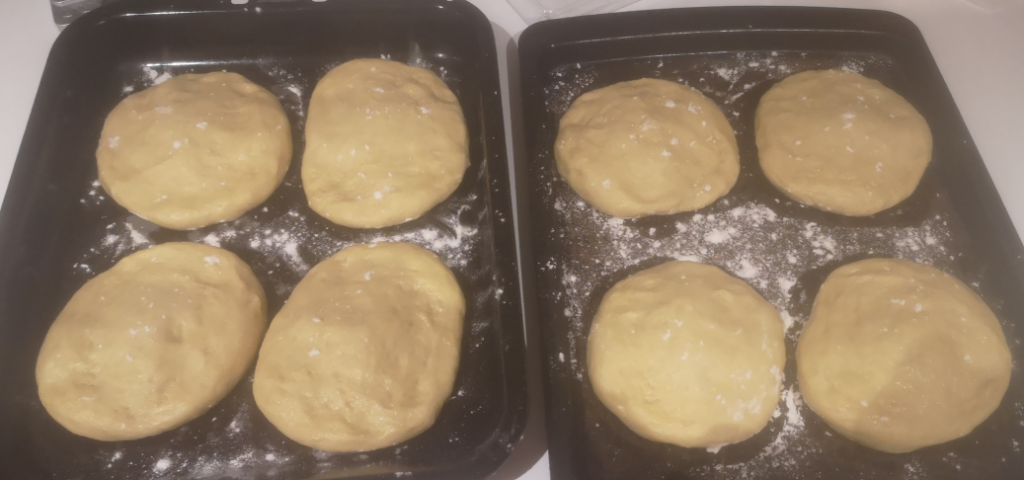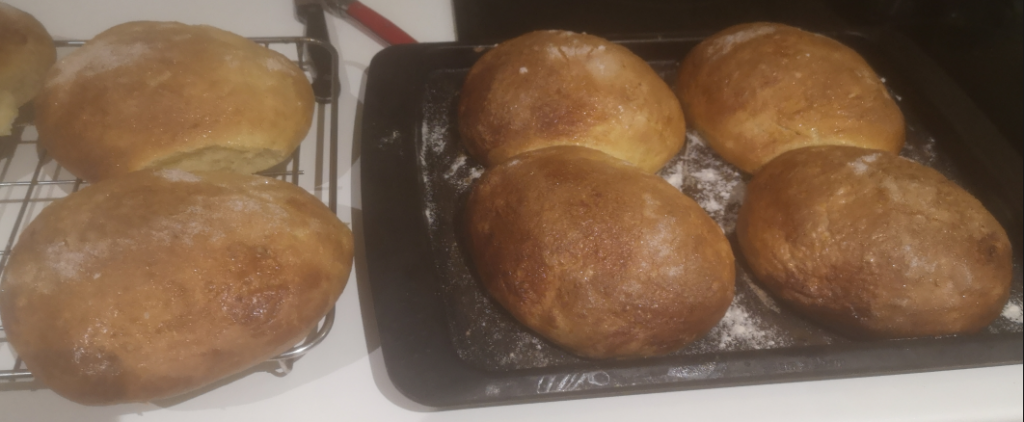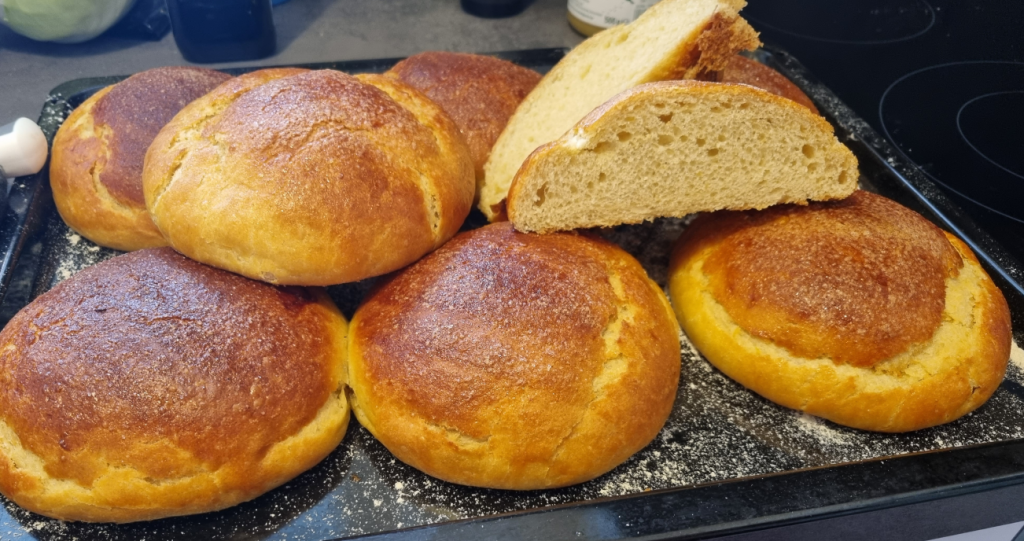Bread is my favourite food and with water, I could live anywhere. I mainly bake sourdough with rye flour based starter. And never managed to get big open crumbs although I have watched many videos, I stick with the recipe I learned.
This weekend I decided to try a recipe for a loaf that looked easy to get open crumbs. I am not sure if it is really rustic but it liked the video and it was easy to follow.
Ingredients:
- 500gr strong flour (13% protein)
- 400gr water
- 3gr dry yeast
- 7gr salt
Process:
- In a bowl with the flour, make a well in the middle and add the water.
- Add the yeast to the water and mix. Then mix everything for a bit
- Add the salt and keep mixing until everything is fully combined.
- Let it rest for 1h. Cover it with a shower cap and towel.
- Fold the dough from the corners several times. Wet your hand with water so the dough doesnt stick too much. Let it rest for another 1h.
- Pre-heat oven at 250C
- This is the “difficult” part. In your work surface add flour, and pour your dough over it. Spread the dough in a rectangle. From the top side, start “wrapping” the dough. Then wrap the dough from one side until you have kind of a small square.
- Flat a bit the dough, and wrap it again starting from the top seam. Then again, fold it from one side. With your hand try to give a rounded form to the dough.
- Move the dough to a lightly floured tray with baking paper. Rest for 15 minutes
- Again, flour your surface, pour the dough, form a square and then fold again starting from the top seam. Pinch the sides and main seam to it looks “locked”.
- Move to the tray again and rest for 5 minutes.
- Score your dough with a razor
- Bake for 20 minutes at 250C and 30 minutes at 220C (or as much brown you want)
- Let it cool down and enjoy!

Unfortunately, the open crumb wasnt as good as in the video so a bit disappointed. So not really sure what I did wrong. At some point I will try again.
Taste wise, it is different from my sourdough loaf. I think I should have left it in the oven a bit longer.
In general it is a good bread, if one day I forgot to have my sourdough ready, I can have a fresh baked loaf in around 3h.






